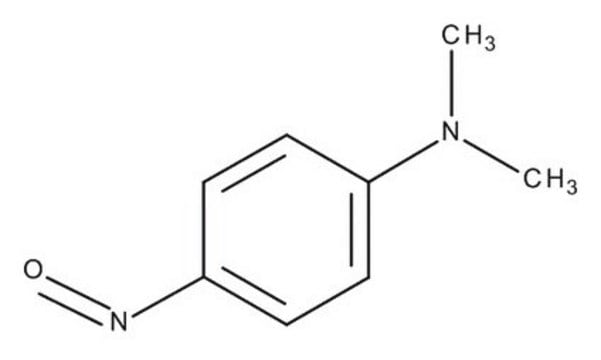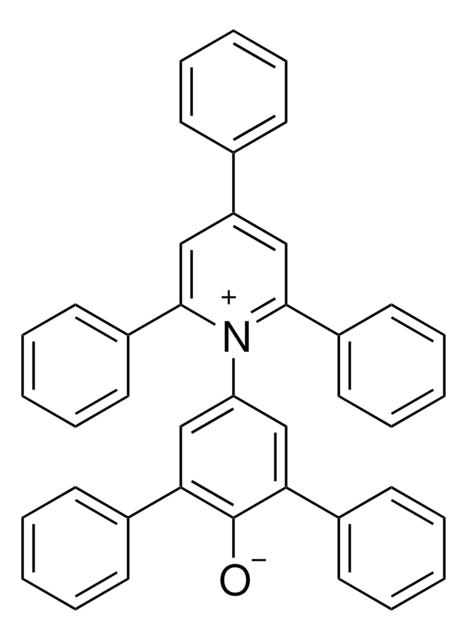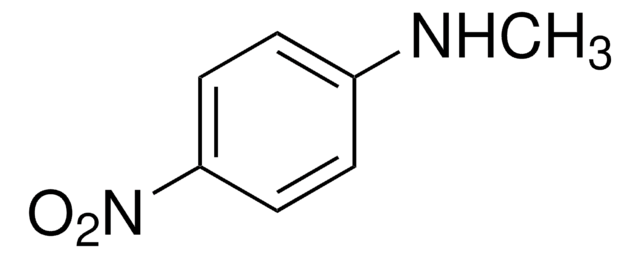D172405
N,N-Dimethyl-4-nitrosoaniline
97%, powder or chunks
Sinonimo/i:
4-Nitroso-N,N-dimethylaniline
Scegli un formato
Scegli un formato
About This Item
Prodotti consigliati
Nome del prodotto
N,N-Dimethyl-4-nitrosoaniline, ≥97%
Livello qualitativo
Saggio
≥97%
Stato
powder or chunks
Punto di fusione
85-87 °C (lit.)
Solubilità
ethanol: 5% (green to very dark green)
applicazioni
diagnostic assay manufacturing
hematology
histology
Temperatura di conservazione
room temp
Stringa SMILE
CN(C)c1ccc(cc1)N=O
InChI
1S/C8H10N2O/c1-10(2)8-5-3-7(9-11)4-6-8/h3-6H,1-2H3
CMEWLCATCRTSGF-UHFFFAOYSA-N
Cerchi prodotti simili? Visita Guida al confronto tra prodotti
Categorie correlate
Applicazioni
Azioni biochim/fisiol
Avvertenze
Danger
Indicazioni di pericolo
Consigli di prudenza
Classi di pericolo
Acute Tox. 3 Oral - Eye Irrit. 2 - Self-heat. 1 - Skin Irrit. 2 - Skin Sens. 1 - STOT SE 3
Organi bersaglio
Respiratory system
Codice della classe di stoccaggio
4.2 - Pyrophoric and self-heating hazardous materials
Classe di pericolosità dell'acqua (WGK)
WGK 3
Punto d’infiammabilità (°F)
Not applicable
Punto d’infiammabilità (°C)
Not applicable
Dispositivi di protezione individuale
Eyeshields, Faceshields, Gloves, type P3 (EN 143) respirator cartridges
Scegli una delle versioni più recenti:
Possiedi già questo prodotto?
I documenti relativi ai prodotti acquistati recentemente sono disponibili nell’Archivio dei documenti.
I clienti hanno visto anche
Filtri attivi
Il team dei nostri ricercatori vanta grande esperienza in tutte le aree della ricerca quali Life Science, scienza dei materiali, sintesi chimica, cromatografia, discipline analitiche, ecc..
Contatta l'Assistenza Tecnica.













